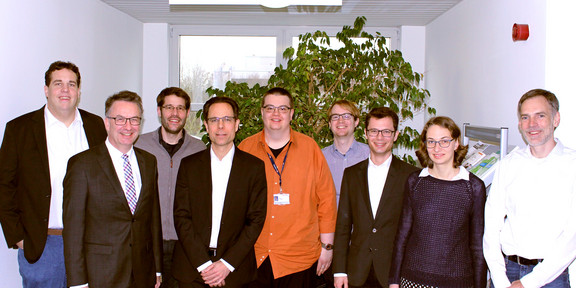DFG-Transferproject

As a result of globalisation, a strongly growing volume of goods can be observed not only in continental traffic, but also on intercontinental transport routes. In the course of this development, transport service providers in the sea freight business are faced with the challenge of organising the transport of sea freight containers in efficient network structures. Since the transport service providers rely on the existing transport capacities of the shipping companies in the main sea leg, the focus is on improving the network structure in the cost-intensive seaport hinterland traffic. Up to now, the individual routes have been planned independently of each other. This usually results in poor utilisation of sea freight containers in part-load traffic of Less-than-Containerload (LCL) shipments and thus in a lower performance of the network structure in the seaport hinterland. Increasing competition, however, requires improved utilisation of the loading units, which is why a consideration of the entire network structure in seaport-hinterland traffic is of central importance.
Against this background, the Institute of Transport Logistics (ITL) has applied for a transfer project with the German Research Foundation (DFG) in cooperation with its long-standing research partner on topics of strategic network planning, the Chair of Discrete Optimisation at the TU Dortmund University headed by Prof. Dr. Christoph Buchheim. The application partner in the project is one of the leading transport service providers for sea freight transport, DB Schenker. The project applied for is entitled "Strategic network planning of seaport-hinterland transports using gateways to consolidate LCL shipments". It continues the existing project on strategic network planning of transport networks under the title "exact and heuristic methods for uncertain and time-dependent hub-location problems using quadratic optimisation".
The project focuses on gateways in the hinterland, which enable an efficient consolidation of the transport volumes of different relations and thus improve the utilisation of containers. Therefore, in the planning problem at hand, it is crucial to determine a network structure that enables a cost-efficient routing of LCL shipments while taking consolidation effects into account. Against the background described above, the aim of the transfer project is to test novel network structures for seaport hinterland transports taking into account cost-efficient consolidations of LCL shipments. In this context, the optimisation procedures developed in the previous project in the context of classic part-load transports in close cooperation with both chairs are to be adapted to the problems in seaport hinterland transports as far as possible. In addition, new methods are being developed for practical formulations for sea transports using gateways in the hinterland. One challenge here is the integration of the transport volumes, which fluctuate strongly over time, into the optimisation procedures. The two chairs will therefore build multi-level stochastic and robust models and solve them exactly using decomposition methods. On the one hand, the project is intended to set new algorithmic and mathematical accents in optimisation methods with stochastic influences and, on the other hand, to contribute to the solution of application-oriented transport planning problems. The cooperation with the project partner DB Schenker, as the world's leading logistics service provider, offers the ideal conditions for testing the optimisation methods developed in the project in practice.
We look forward to continuing the research collaboration with the Chair of Discrete Optimisation and to a good cooperation with the application partner DB Schenker.




